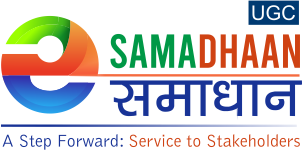All India Co-ordinated Research Project on Pigeonpea, Akola
|
|
||
|
|
||
|
|
||
|
|
||
|
|
Scientists |
|
|
|
||
|
|
||
|
|
||
|
|
||
|
|
About Project
All India Co-ordinated Research Project on Pigeonpea sub centre was started from 1997.
Agro Climatic Information
Vidarbha region of Maharashtra state is mostly characterized by dryland farming. The climatic conditions of this region can be broadly described as semi-arid. The jurisdiction of Dr. Panjabrao Deshmukh Krishi Vidyapeeth is entire Vidarbha region. The region comprises of eleven districts viz. Buldana, Akola, Washim, Amravati, Yavatmal, Wardha, Nagpur, Bhandara, Gondia, Chandrapur and Gadchiroli.
1. Assured rainfall kharif crop zone (ARK) comprises of Buldana, Akola, Washim, Amravati (excluding Warud and Dhamangaon tahsil) and part of Yavatmal (Pusad and Darwha tahsils) district. Its average rainfall is 693 mm distributed in 46 rainy days. July is the most wet month with 204 mm average monthly rainfall. It is essentially a kharif crop area with predominance of cotton and kharif sorghum. These two crops occupy more than 70% of the area. Among pulses udid, mung and pigeonpea in kharif and chickpea in rabi are grown on considerably large area. However, the yield levels are low.
2. Moderate Rainfall Zone (MR) is spread over Yavatmal (except Pusad and Darwha tahsil); Nagpur (except Bhiwapur and part of Umred tahsil); Wardha and Chandrapur (Warora, Rajura tahsil) districts. Average annual rainfall is 1133 mm distributed in 59 rainy days. Maximum monthly average rainfall (323 mm) is received in 16 rainy days in July. Cotton, sorghum and pigeonpea are major kharif crops in this zone. Rabi sorghum is grown in Warora, Rajura and Ramtek tahsil. Mung, udid and Chickpea are grown all over the zone. The average yield of pigeonpea in Amravati, Yavatmal and Wardha districts are better than rest of Vidarbha.
3. High Rainfall Zone (HR) comprises of Bhandara, Gondia, Chandrapur, (excluding Rajura and Warora tahsil), Gadchiroli and Nagpur (Bhiwapur and part of Umred tahsil) districts. Annual rainfall ranges from 1260 mm on western side of the zone to 1700 mm on a far eastern side. Average total annual rainfall is 1402 mm with 61 rainy days. Rainy season is from June to September. However, few showers (about 50 to 60 mm) are obtained in October, which are favourable for rabi pulses. It is predominantly a paddy growing area in kharif and most of the rabi area is under pulses such as chickpea, mung, udid, lathyrus, lentil, dolichos bean etc. However, the yield levels of pulses are very poor. In general, the pulses are neglected with almost no input and least management. Majority of them are under utera condition in which lathyrus is predominant.
Infrastructure Facilities
12.0 ha of land and Field laboratory
Mandate
-
Genetic enhancement (stable productivity potential and desirable grain quality) and development of improved varieties at pulses to suit different agro-eco- system.
-
Development of varieties with resistance/tolerance for major biotic and abiotic stresses.
-
Development of medium duration hybrids suitable for different agro-ecosystems.
-
Developing production technology of pulses for higher monetary returns.
-
To develop integrated pest and diseases management technique.
Research Activities and Achievements
Significant Research Achievements in Pigeonpea
-
Extra early TAT-10
-
Early T.Vishakha-1, AKT-8811,.
-
Midlate PKV TARA (TAT-9629) high yielding medium bold seed variety..
-
Late Asha (ICPL-87119) identified as wilt and sterility mosaic resistant variety, Suitable for Kharif as well as Semi rabi cultivation in Vidarbha under contingent situation
- Late C-11 suitable for Kharif as well as Semi rabi cultivation
GMS based Pigeonpea hybrids
-
Early – AKPH-4101
-
Mid late – Santur-1 (AKPH-2022)
Research Recommendations
Crop Production Technologies
- For getting maximum yield of pigeonpea, it is recommended to keep the field weed free upto 75 DAS. Pre-emergence application of Pendamethalin @ 0.75kg a.i./ha in 600 to 700 liters of water within one to two days after sowing followed by one hand weeding at 30 days after sowing is recommended for control of weed in pigeonpea.
- Application of 20 kg P (46 kg P2O5 /ha) along with 5 t FYM and 1.5 kg PSB per ha is recommended for economy in chemical fertilizer for pigeonpea crop.
- It is suggested to sow pigeonpea on ridges and furrows and if not possible furrows should be opened after one month from sowing.
- Two irrigations, first at bud formation and another at pod development stage increases grain yield by 54 per cent in pigeonpea. In case of availability of single irrigation should be applied at pod development stage translating into increased grain yield by 37 per cent
Crop Protection Technologies
- Three sprays of HaNPV 250 LE/ha alternated with one spray of NSE 5 % at an interval of 15 days starting from 50 % flowering is recommended for effective management of pigeonpea pod borer.
- For pigeonpea pod borer management IPM approach with a) NSKE 5% at ETL (b) Endosulfan 0.07 % after 15 days of NSKE application (c) HaNPV 250 LE/ha after 15 days of Endosulfan spray and (d) Methyl Parathion 2 % dust @ 20 kg/ha 15 days after HaNPV spray are recommend.
- The spraying of Metarhizium anisopliae (1010 or 109) conidia/ml fungal suspension) 2 to 3 ml + Ranipal (0.01%) ml in one lit of water at 50% flowering is recommended for the management of H. armigera on pigeonpea.
- Application of Neem Seed Extract 5 per cent or Endosulfan 0.07 percent or HaNPV 250 LE/ha or dusting of Methyl Parathion 2 per cent @ 20 kg/ha should be taken at ETL at an interval of 15 days for effective management of pigeonpea pod borer.
- Two sprays of insecticides in combination with biopesticides and plant products starting from ETL (5 per cent pod damage) was effective for the management of helicoverpa. Experiment on efficacy of HaNPV, NSKE along with Endosulfan revealed that the application of HaNPV 250 LE/ha + Endosulfan 0.035 per cent or NSKE 5 per cent + Endosulfan 0.035 per cent effectively managed the incidence of helicoverpa in pigeonpea.
- The studies on efficacy of Metarhizium anisopliae on H. armigera revealed higher potential when applied at 1010 or 109 conidia/ml alongwith Ranipal (0.1%) 1 ml/lit of water.
- For effective control of wilt/root rot of pigeonpea and also in terms of increasing the yield, seed treatment with bio agent viz., Trichoderma harzianum or Trichoderma viridae @ 4gm/kg seed before sowing is recommended.
Ongoing Projects
- “Enhancing yield and stability of pigeonpea through heterosis breeding” sponsored by ICAR under “Integrated Scheme of Oilseeds, Pulses, Oil palm & Maize (ISOPOM)” Ministry of Agriculture, India (2005 to 2010).
- “Development and popularization of Model Seed System(s) for quality seed production of major legumes to ensure seed sufficiency at village levels” (2006-2010)
- “Enhancing grain legumes productivity, production and income of poor farmer in drought prone areas of sub-Sahara and south Asian area” sponsored by Bill Gates foundation (2007 to 2010).
- “Taking Pigeonpea hybrids to the doorstep of the farmers”: Sponsored by Government of India under National Food Security Mission in collaboration with ICRISAT, Hyderabad (2008-2012).
Publications
-
Marathi Booklet : Kaddhanya Pike Sudharit Lagwad Tantra: Dr. K.B. Wanjari.
-
Marathi Booklet : Sankarit Tur Bijotpadan Tantra: Dr. K.B Wanjari and Dr. A.N. Patil
-
Marathi folder : Turichi Sudharit Lagwad Wa Bijotpadan Tantra: Dr. A.N. Patil, Dr. V.V. Goud and R.M. Wadaskar
-
Marathi folder : Turiwaril Kid Wa Rog – Olakh Wa Vyawasthapan : R.M. Wadaskar, Dr. V.V. Goud and Dr. A.N. Patil
Contact Information
Dr. Ashok N. Patil
Senior Research scientist
Pulses Research Unit
Dr. Panjabrao Deshmukh Krishi Vidyapeeth
Krishi Nagar, Akola – 444 104, Maharashtra
email : srspulses@pdkv.ac.in
Phone : (O) – 0724/2259391






 Krishikosh Repository
Krishikosh Repository



